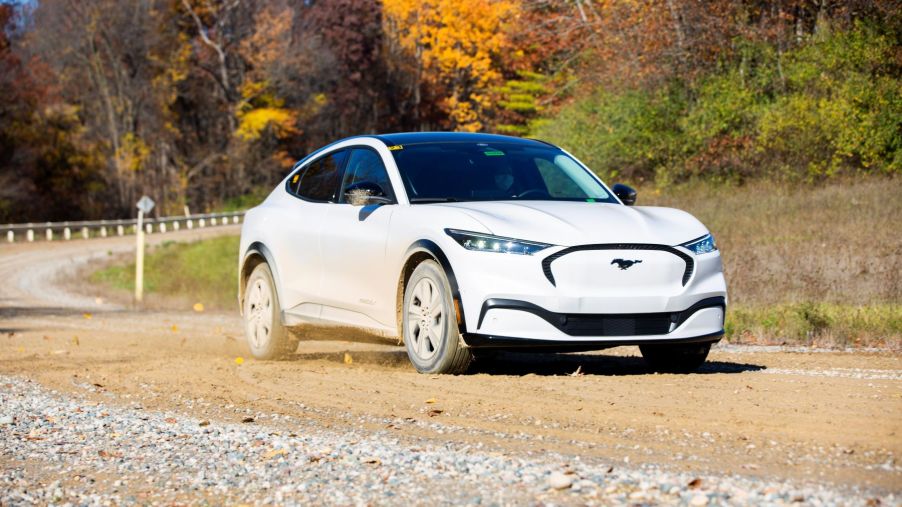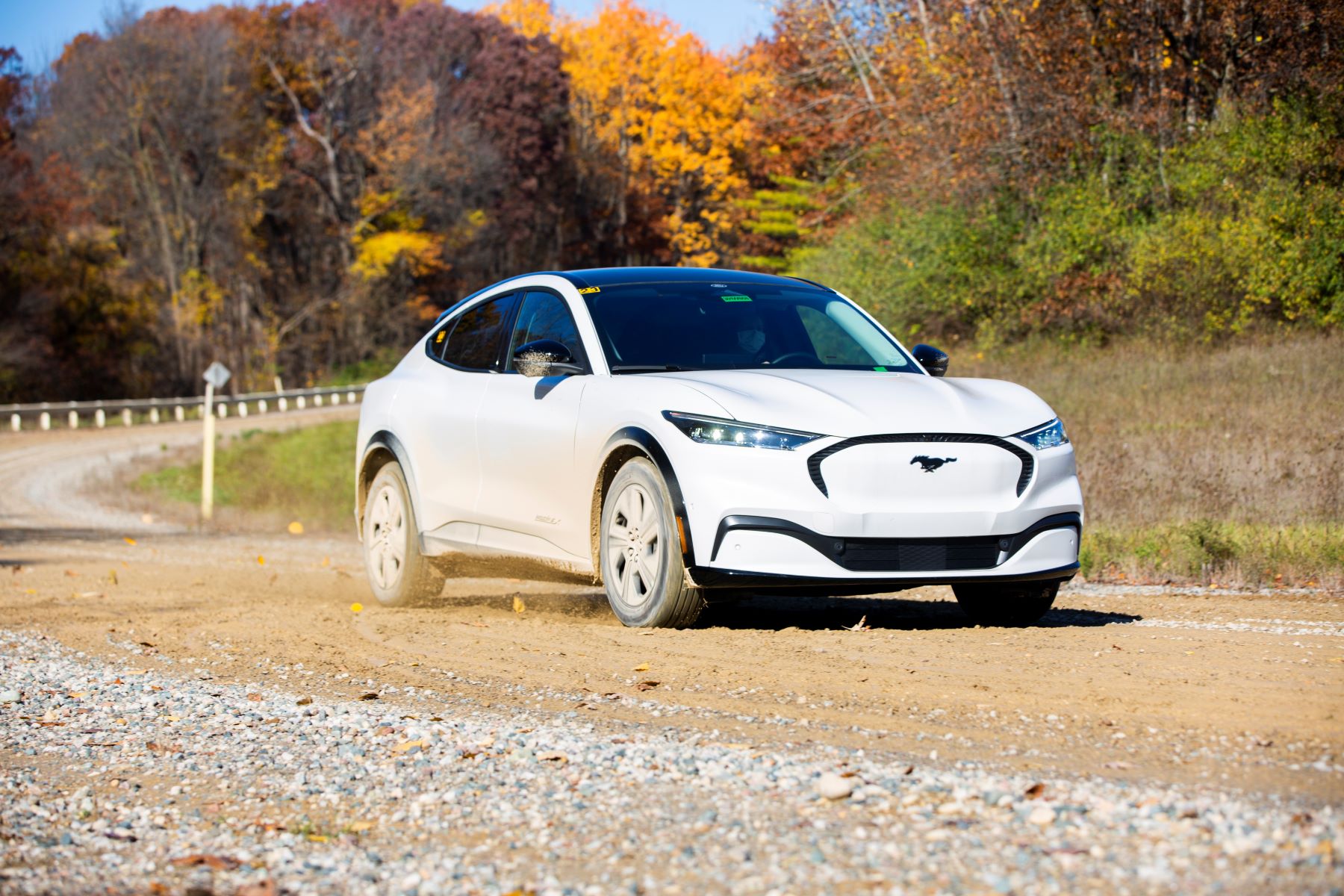
How Is the Ford Mustang Mach-E Holding up a Year Later?
While sales have slowed a little since its launch, the Ford Mustang Mach-E is still a hot ticket item in the U.S. electric vehicle market. Ever wonder what the Mustang Mach-E is really like? If someone bought one of the first Mustang Mach-Es and had been driving it over the last year, what would we learn about it? We’re going to cover what an early buyer thinks of the new Ford Mustang Mach-E. We’ll talk about the pros and cons and the future of EVs at Ford.
The initial release of the Ford Mustang Mach-E all-electric compact SUV

When Ford released the new Ford Mustang Mach-E last year, it was the first time that the automaker expanded its Mustang lineup in more than fifty years. The all-electric SUV joined the roster with the convertible, special editions, and sports coupe models.
The automaker explains that the Mustang Mach-E captures the spirit of the Mustang. From its athletic curves to its stylish silhouette, it offers a dynamic driving experience and the satisfying sound of the engine. This is especially true of the GT Performance Edition, which can go from 0 to 60 mph in just 3.5 seconds. It has a power output of 480 horsepower and 634 lb-ft of torque. The Mustang Mach-E also has an EPA-estimated driving range of up to 300 miles with the available extended-range battery and rear-wheel-drive configuration.
As for combatting range anxiety, the Mustang Mach-E has built-in charging solutions that direct owners to the nearest public charging stations. The system can also recommend charging locations on travel routes and gives access to the FordPass charging network, which has more than 13,500 public charging stations.
A year with the Mustang Mach-E
Recently, InsideEVs talked to Alex L. Dykes, the host of the Alex on Autos and EV Buyers Guide channels on YouTube. Dykes has owned a 2021 Ford Mustang Mach-E Premium Extended Range AWD for a year and put 10,000 miles on it. Before he passed it to a new owner, he gave a detailed explanation about driving the SUV for the last year in a recent video.
Dykes shared many interesting insights. He wasn’t a fan of the standard 225 all-season tires that he felt were so skinny that they negatively impacted handling and stopping distance. Dykes swapped them out for 245 Pirelli P-Zeros that have thicker sidewalls like those that come with the Mustang Mach-E GT.
What effect did the new tires have on the driving range? Dykes explains that he only lost about 10 miles of range after the change. The vehicle’s 88 kWh battery pack is EPA-rated at 270 miles. After a year of use and 10,000 miles, there was little resulting loss of range.
In February 2021, Dykes tested the driving range of his Ford Mustang Mach-E, and the result was 275 miles. Once he made the tire switch that summer, a subsequent test gave him a result of 265 miles. One final test after 9,865 miles on summer tires showed a result of 264 miles.
Will the Mustang Mach-E get the same mileage in all weather conditions? Not likely, as it doesn’t have a heat pump. During a trip in 30-degree Fahrenheit weather, with the heat on in the cabin, 80% of the battery was used for driving 150 miles.
The future of Ford EVs
Ford told Reuters that it has no plans to spinoff its EV or internal combustion engine (ICE) vehicle businesses. Chief Executive Jim Farley explained that Ford knows its competition is Nio and Tesla and needed to beat them, not match them. Farley said Ford has “to beat the best of the ICE players.”
Investors have urged both Ford and General Motors to spinoff their EV production to tap into the full value of those businesses. Ford reported last month that it has the capacity to build 600,00 EVs like the Mustang Mach-E across the globe in the next two years. Farley’s management team feels Ford’s EV and ICE businesses are underperforming regarding earnings.
Farley said Ford needs real expertise to take on Tesla. He explained that Ford needs to hire those in fields like advanced electrical architecture, electrical components, and digital customer experience. Ford, according to Farley, is also trying to make deals to secure raw materials for batteries like copper, lithium, nickel, and more to be competitive. Lastly, they have plans to streamline distribution. Farley says Ford needs to eliminate expensive inventory and create an easier way for consumers to reserve a vehicle and track it from assembly to delivery.


